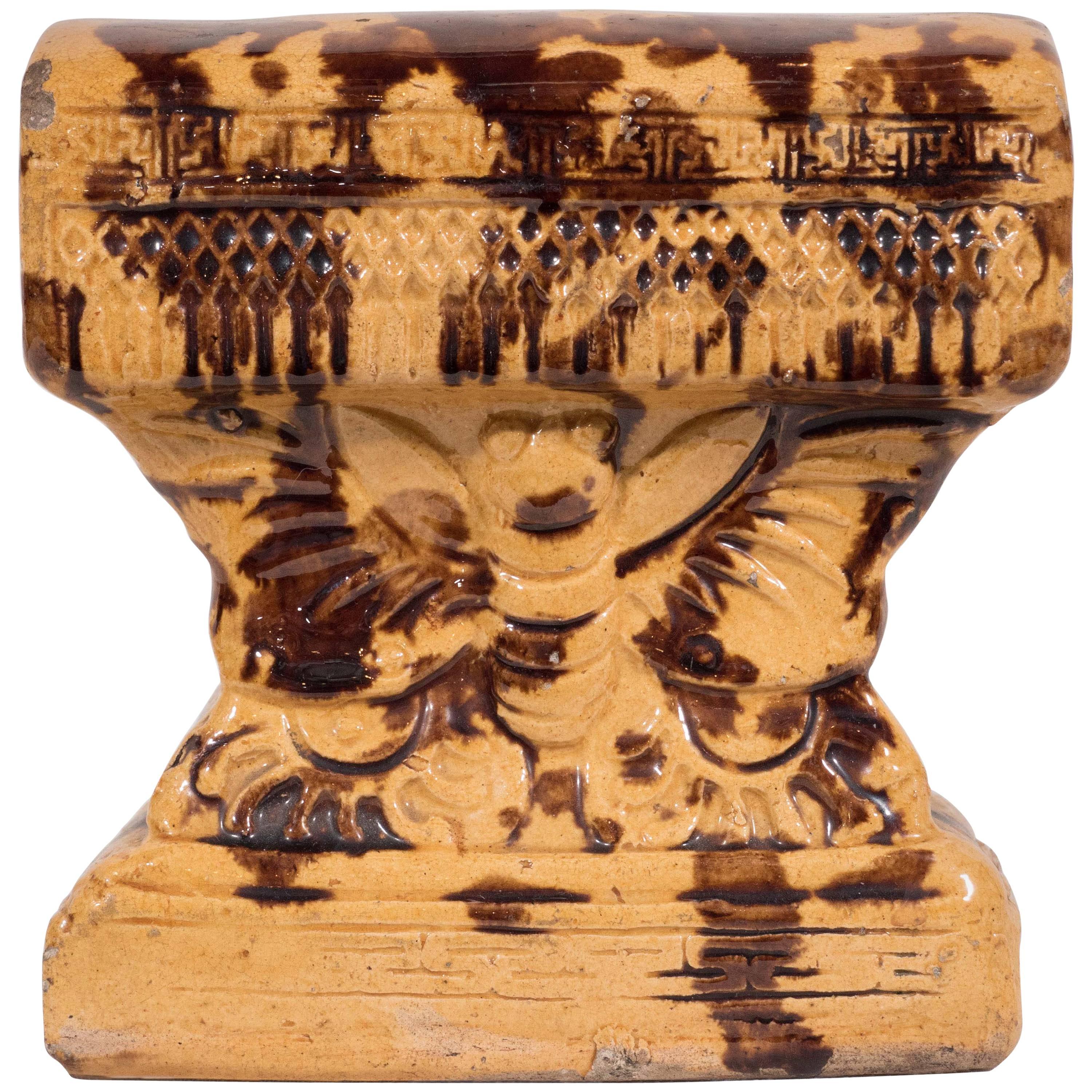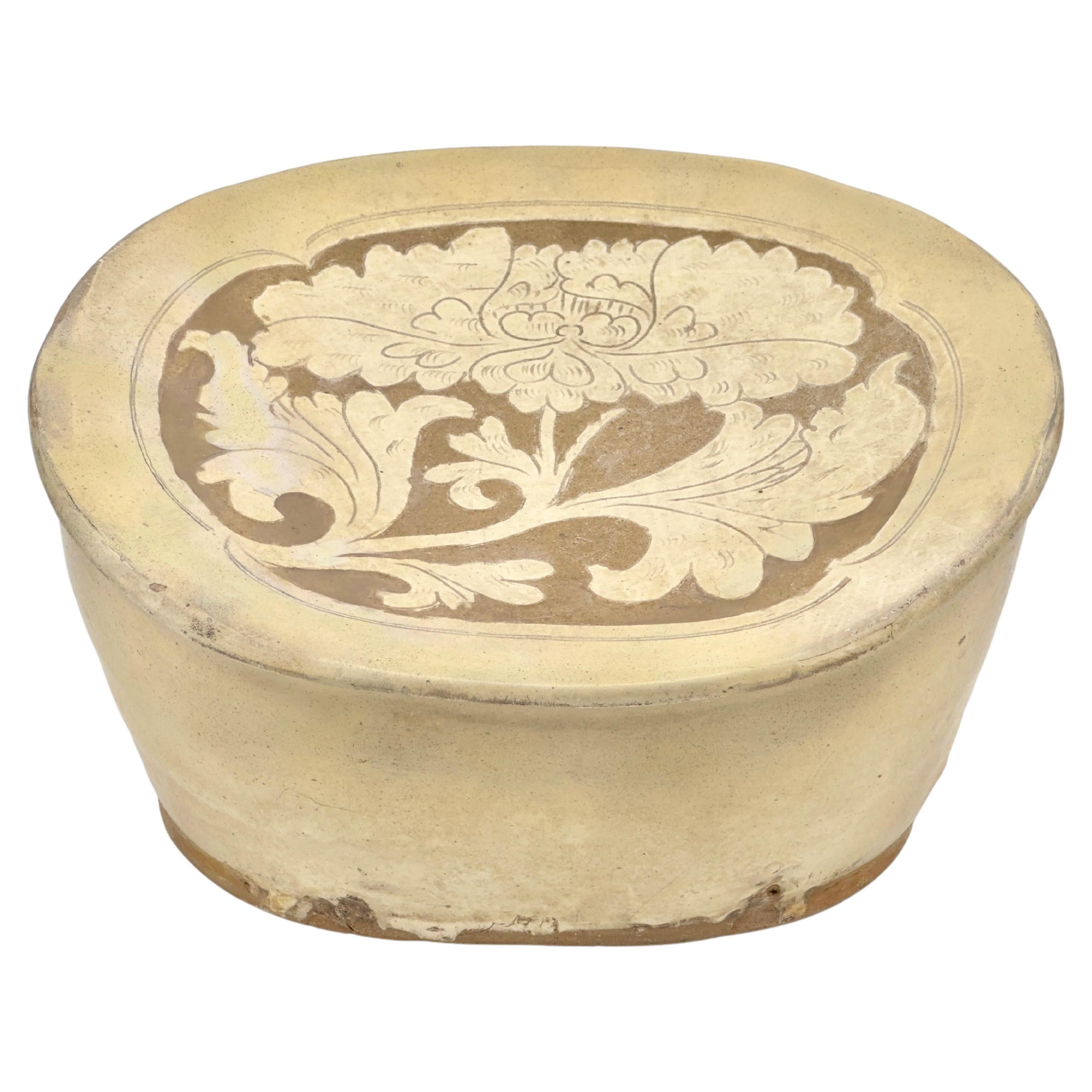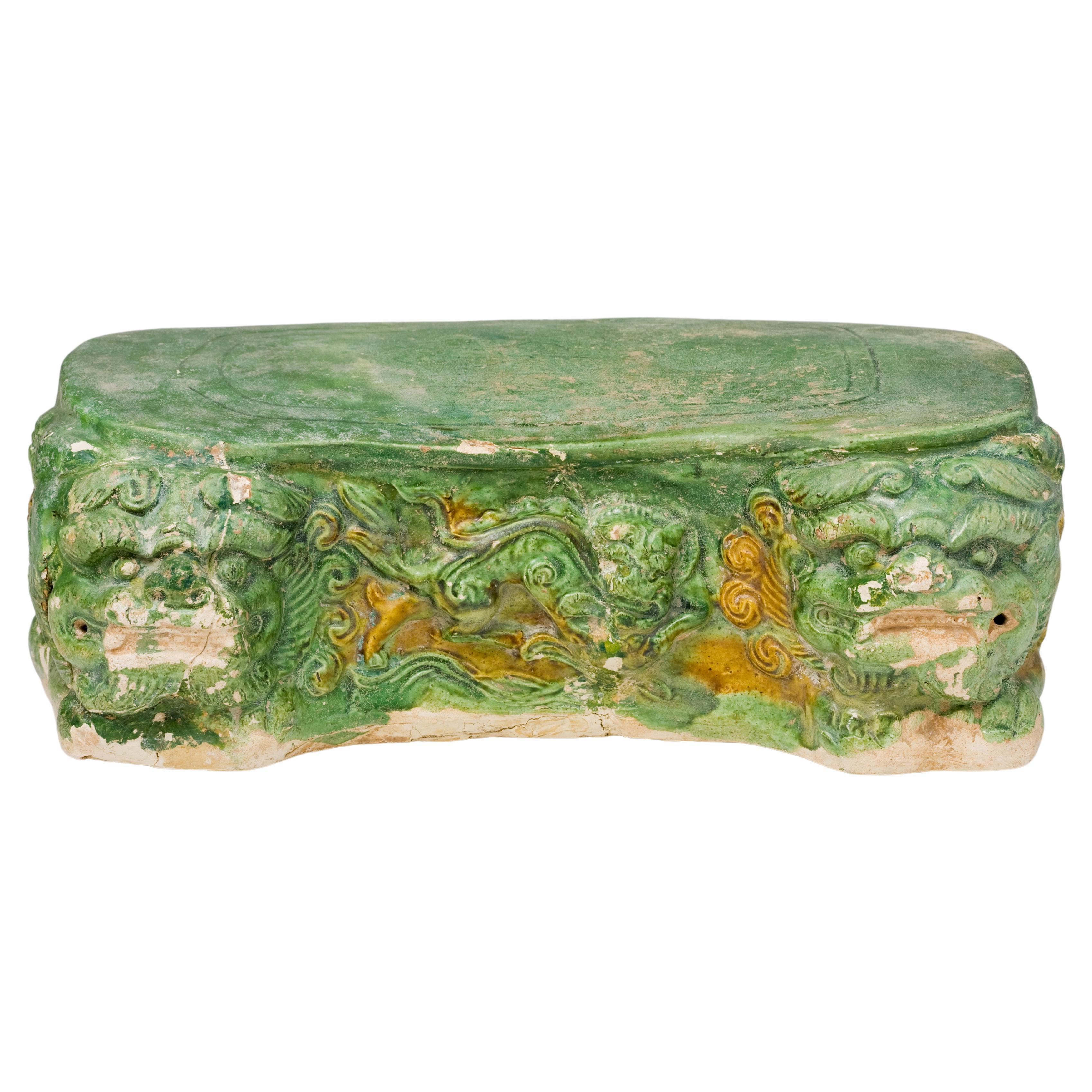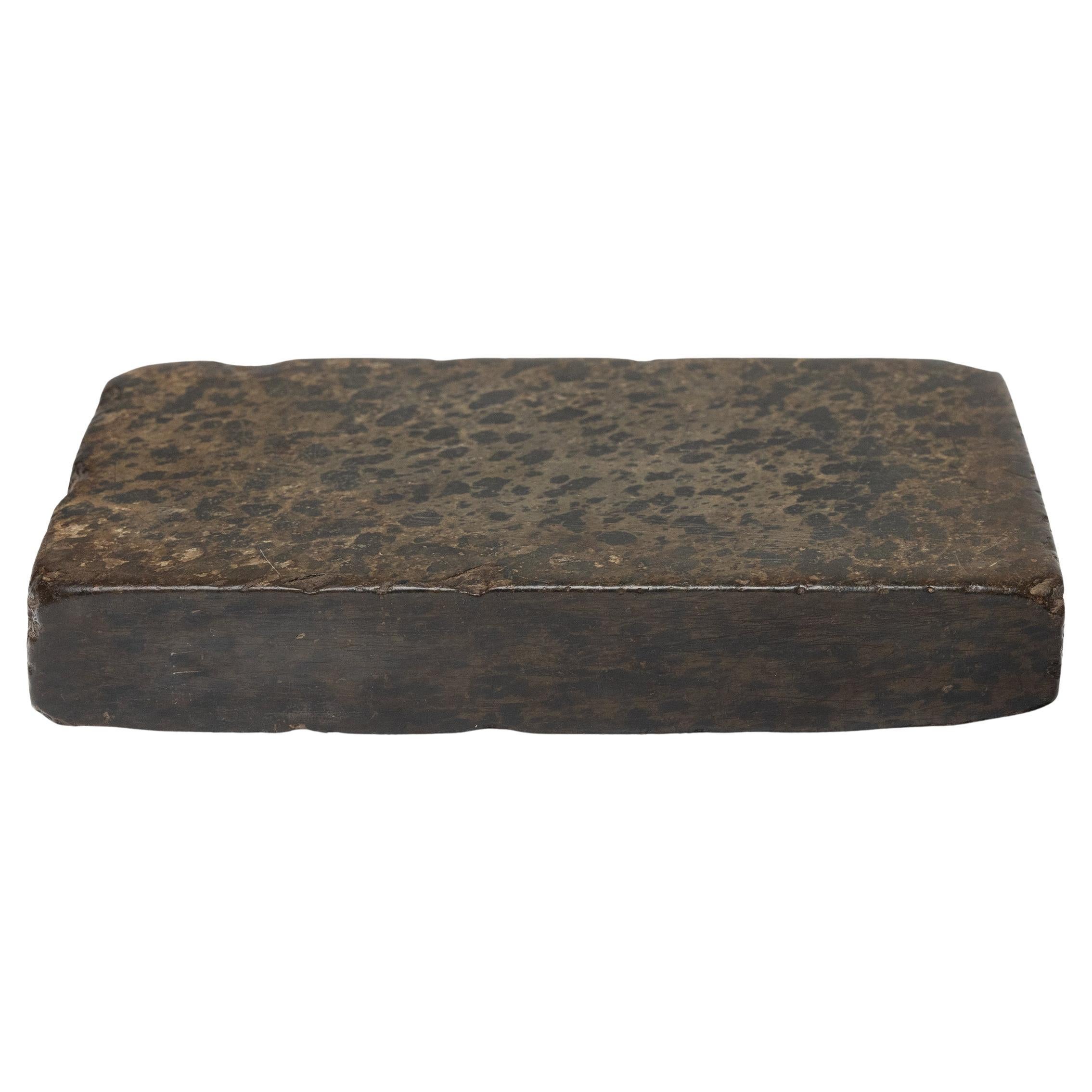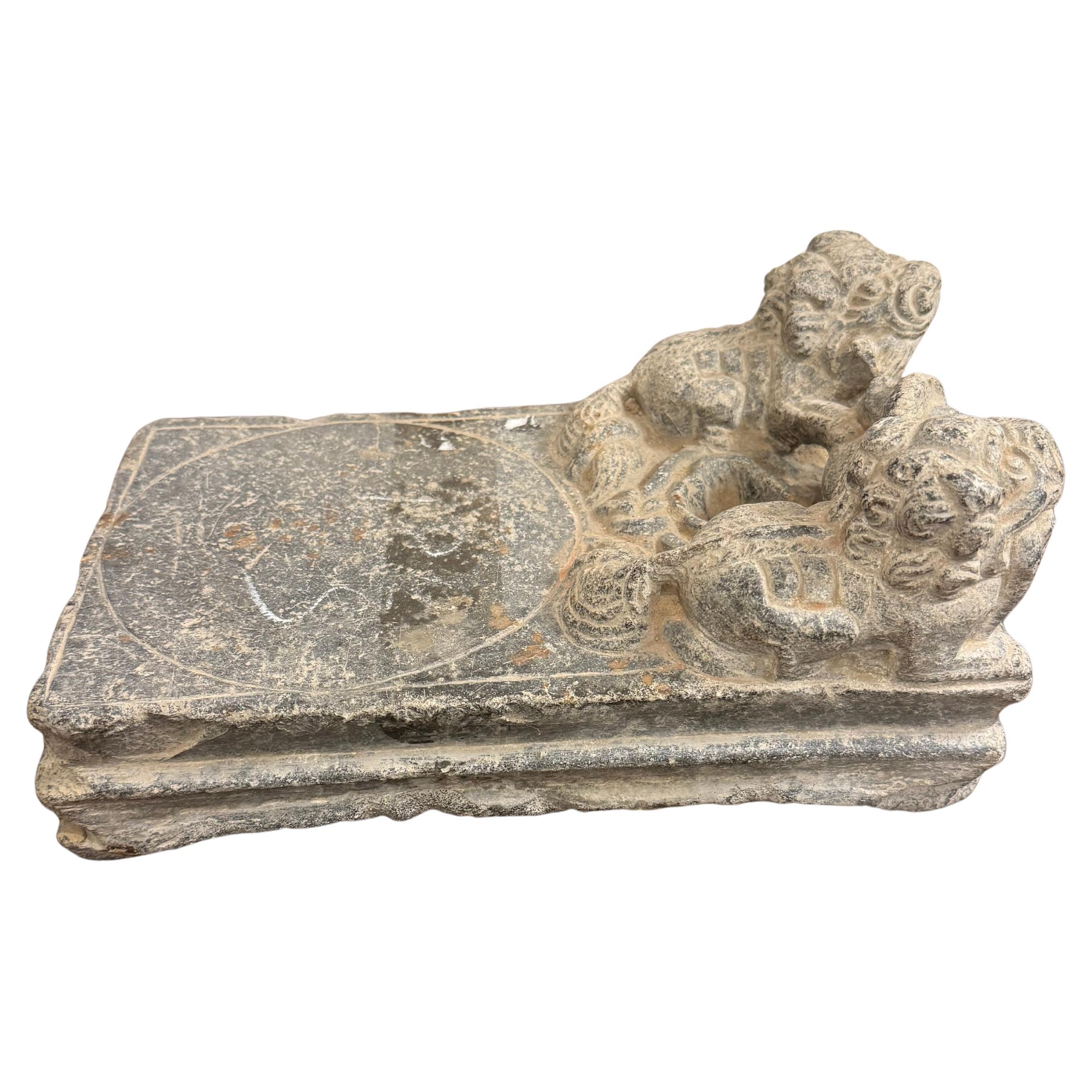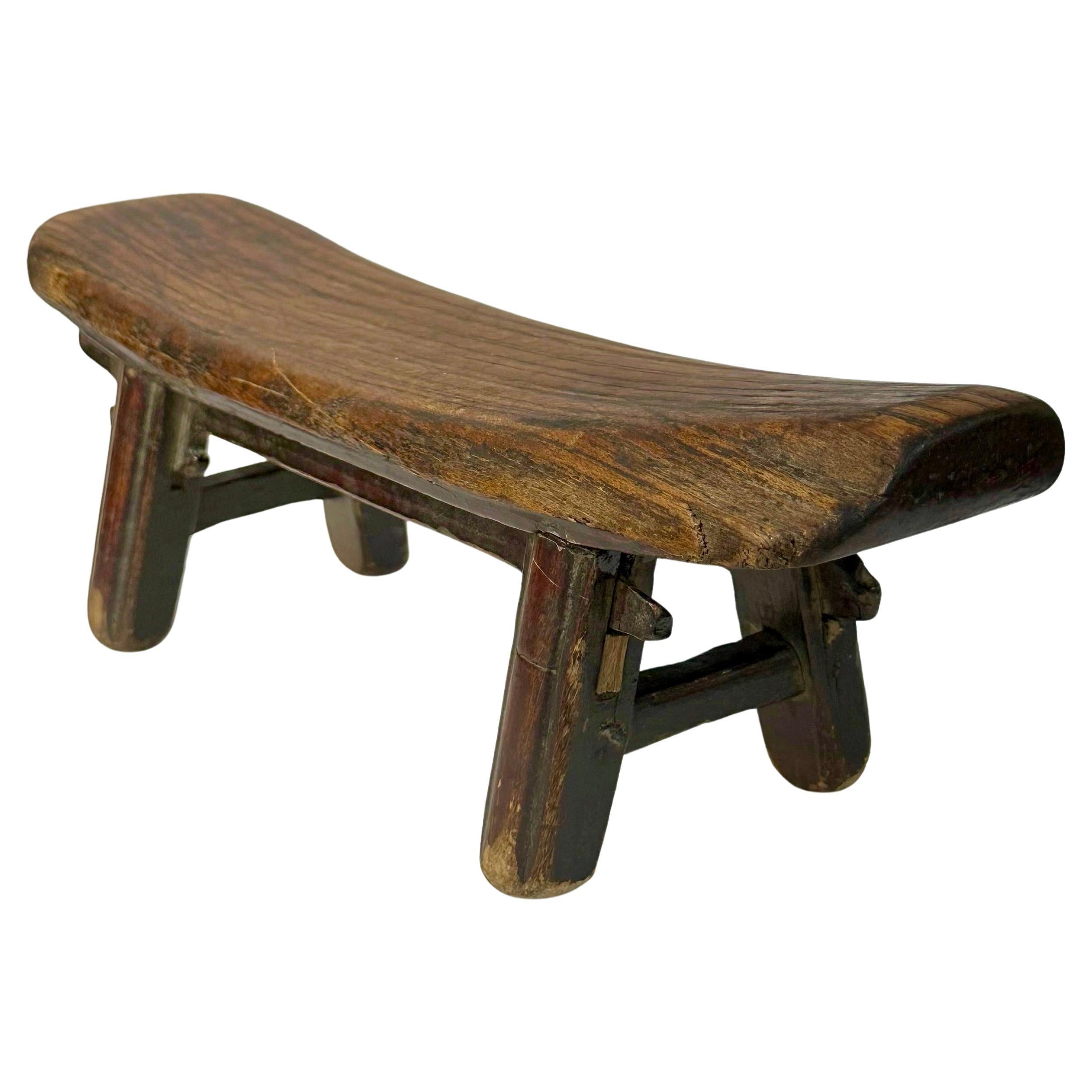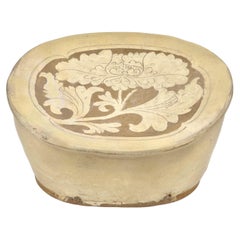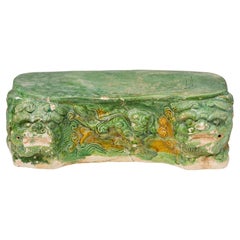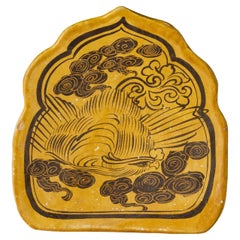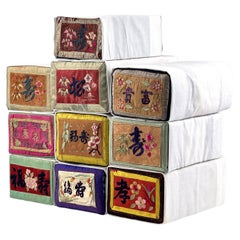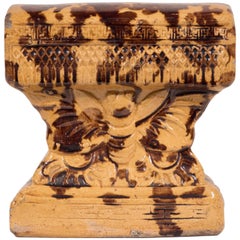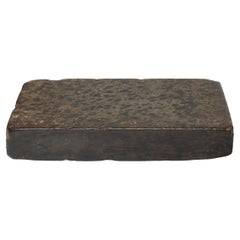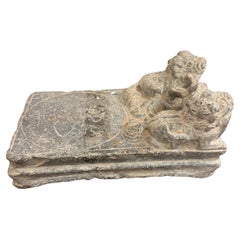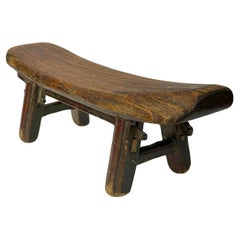Items Similar to Cizhou Rectangular Pillow with Carved Decoration, Yuan Dynasty
Want more images or videos?
Request additional images or videos from the seller
1 of 14
Cizhou Rectangular Pillow with Carved Decoration, Yuan Dynasty
$2,535
$3,90035% Off
£1,924.53
£2,960.8135% Off
€2,201.25
€3,386.5435% Off
CA$3,541.76
CA$5,448.8735% Off
A$3,939.21
A$6,060.3335% Off
CHF 2,056.93
CHF 3,164.5135% Off
MX$47,936.03
MX$73,747.7435% Off
NOK 26,270.19
NOK 40,415.6835% Off
SEK 24,636.81
SEK 37,902.7835% Off
DKK 16,428.78
DKK 25,275.0435% Off
Shipping
Retrieving quote...The 1stDibs Promise:
Authenticity Guarantee,
Money-Back Guarantee,
24-Hour Cancellation
About the Item
Cizhou ware is known for its robust forms and freely applied decoration, often featuring a white slip under clear glaze. The pillow is rectangular, with a slightly curved top surface to accommodate the head of the sleeper. The decoration on this pillow features an incised design, delineated with fine lines to create a clear and simplistic representation. The motif includes floral elements, likely peony or chrysanthemum, and foliage, which were popular during the Song and Yuan periods. The carving is subtle yet skillful, showing the artistry and aesthetic preferences of the era.
Period : Yuan Dynasty, 13th-14th Century
Type : Pillow
Medium : Cizhou Ware
Provenance : Acquired in late 1990s from Hongkong
Reference :
1) Datong Museum - Cizhou Pillow Collection
2) Sanmenxia City Museum - Cizhou Pillow Collection
* Cizhou Ware
Cizhou stoneware is recognized for its diverse range of hardness and is commonly found in shades of grey or buff. These pieces are often adorned with decorations such as paintings, incisions, or carvings, applied over a layer of clay slip. Originating from the Cizhou region in Hebei Province, their production was not limited to this area; it spread across various provinces in China during the Song, Yuan, and Ming dynasties, with major manufacturing hubs located in the northern provinces of Hebei, Henan, and Shanxi.
Cizhou ware enjoyed widespread popularity, catering to an affluent merchant class during a time when the tea houses of the capital were adorned with the works of renowned painters. Although this type of pottery didn't seem to catch the attention of Chinese collectors in the 18th and 19th centuries, it was highly valued by the Japanese, who appreciated its folk art charm and rustic appearance. Today, Cizhou pieces command impressive prices at auction.
Over the last fifty years, archaeologists have identified and excavated kilns where Cizhou wares were produced, enabling a clearer understanding of the ware's origins and the evolution of its styles.
The potters of the Song dynasty employed various decoration techniques for their Cizhou creations, including vases, jars, pots, boxes, and pillows. One such method, Champleve, emerged in Henan at the onset of the Song period, particularly in Dengfengxian and Xiuwu. This involved coating the ceramic with a white slip, then carving or incising the design to reveal the darker body beneath before glazing. The resultant contrast between the brown body and the glazed surface was striking. Occasionally, designs were set against a background of small circles stamped with a metal or bamboo tool, a decorative style also common in Tang metalwork. An 11th-century variation involved incising these small circles through the slip and filling them with a brick-red pigment before glazing items like pillows or cups. Sgraffito was another technique where two different colored slips were layered—brown over white or vice versa—and designs were created by scratching away the top layer before applying a transparent glaze to finish the piece.
- Dimensions:Height: 4.73 in (12 cm)Width: 12.6 in (32 cm)Depth: 6.3 in (16 cm)
- Materials and Techniques:
- Place of Origin:
- Period:
- Date of Manufacture:13-14th century
- Condition:Wear consistent with age and use. There is a dent in the upper right corner.
- Seller Location:seoul, KR
- Reference Number:1stDibs: LU9577239214592
About the Seller
4.8
Gold Seller
Premium sellers maintaining a 4.3+ rating and 24-hour response times
Established in 1999
1stDibs seller since 2023
38 sales on 1stDibs
Typical response time: <1 hour
- ShippingRetrieving quote...Shipping from: seoul, Korea South
- Return Policy
Authenticity Guarantee
In the unlikely event there’s an issue with an item’s authenticity, contact us within 1 year for a full refund. DetailsMoney-Back Guarantee
If your item is not as described, is damaged in transit, or does not arrive, contact us within 7 days for a full refund. Details24-Hour Cancellation
You have a 24-hour grace period in which to reconsider your purchase, with no questions asked.Vetted Professional Sellers
Our world-class sellers must adhere to strict standards for service and quality, maintaining the integrity of our listings.Price-Match Guarantee
If you find that a seller listed the same item for a lower price elsewhere, we’ll match it.Trusted Global Delivery
Our best-in-class carrier network provides specialized shipping options worldwide, including custom delivery.More From This Seller
View AllCizhou carved bean-shaped pillow, Song-Jin Dynasty, 11th-12th century
Located in seoul, KR
Crafted from fine clay, the pillow's surface boasts a sophisticated carved design featuring a floral motif that is both symmetrical and organic. The interplay of the earthy tones and...
Category
Antique 15th Century and Earlier Hong Kong Chinoiserie Antiquities
Materials
Stoneware
$2,535 Sale Price
35% Off
A Sancai-glazed pottery 'Haitai' Pillow, Tang dynasty
Located in seoul, KR
The pillow is intricately decorated with a vibrant pattern, demonstrating the craftsmanship and artistic sensibilities of the period. The Haitai is a creature from Chinese mythology,...
Category
Antique 15th Century and Earlier Hong Kong Tang Antiquities
Materials
Earthenware, Pottery
$2,950 Sale Price
50% Off
Rare Cizhou 'Mandarin duck and Reishi mushroom' Painted Pillow, Jin-Song Dynasty
Located in seoul, KR
Mandarin ducks symbolize eternal love and fidelity in East Asian culture, often representing marital harmony as they are believed to mate for life. Reishi mushrooms, known as symbols of longevity and health, are revered in traditional Asian medicine for their association with immortality and have been used for centuries to promote vitality and strengthen the immune system.
The orange glaze is commonly found on Cizhou-type tiger pillows. The attached materials indicate that this tiger pillow is from the same period and shares the same color tone as the one housed in the Baoji Bronzeware Museum, a national museum located in Shaanxi Province. Considering the glaze color, painting style, and shape, it is speculated that this piece was used by the imperial court.
Period : Jin-Song Dynasty(12-13th century)
Type : Pillow
Medium : Cizhou Ware
Size : 28 cm(Width), 30cm(Vertical), 16cm(Height)
Provenance : Acquired in late 1990s from Hongkong
Reference
1) Christies Hongkong 9 OCT 2019 - The Pavilion Sale - Chinese Ceramics and Works of Art Including the Quek Kiok Lee Collection
(Price realised : HKD 225,000 / Type : related)
2) The Baoji Bronzeware Museum, Shaanxi Province - Tiger Cizhou Pillow...
Category
Antique 15th Century and Earlier Hong Kong Antiquities
Materials
Pottery
$10,680 Sale Price
40% Off
Ten Auspicious Korean Traditional Embroidered Pillows
Located in seoul, KR
Ten traditional embroidered pillows given by a bride to her husband as part of her dowry during marriage in Korea's modern era. These embroidered designs convey auspicious messages r...
Category
Antique 19th Century Korean Antiquities
Materials
Fabric
$1,950 Sale Price
35% Off
Rare Lion Figurine Pillow, Tang Dynasty(618-907)
Located in seoul, KR
To meet overseas demand, shapes of Changsha wares were also greatly influenced by exotic elements from beyond China. For example, lion-shaped artifacts were found, as were a number o...
Category
Antique 15th Century and Earlier Hong Kong Tang Antiquities
Materials
Stoneware
$9,743 Sale Price
35% Off
Covered Boxes from Ca Mau Ship, Qing Dynasty, Yongzheng Reign
Located in seoul, KR
The central design features botanical motifs, with fully bloomed flowers and branches intricately depicted. The rim of the lid is encircled by a decorative band resembling a twisted ...
Category
Antique 18th Century Vietnamese Qing Antiquities
Materials
Ceramic
$1,625 Sale Price / set
35% Off
You May Also Like
Antique Chinese Stoneware Pillow 19th Century
Located in Katonah, NY
Antique Chinese pillows were made from a wide range of materials, including bamboo, jade, porcelain, and wood. Traditionally solid, they were sometimes used with softer fabric over them. We are pleased to offer this pillow, which is decorated with brown glazes allowed to run over beige-colored stoneware. On both sides, the impressed design is a honeybee and honey combs symbolizing a wish for sweet dreams. Along the top and bottom of the pillow are traditional Chinese cloud collar...
Category
Antique 19th Century Chinese Qing Ceramics
Materials
Stoneware
Chinese Ink Slab Stone Tray, c. 1800
Located in Chicago, IL
Minimal and austere, this stone tray exemplifies the refined beauty sought after by traditional Chinese scholars, who filled their studios with objects that inspired creative thought...
Category
Antique Early 19th Century Chinese Minimalist Scholar's Objects
Materials
Stone
A Chinese Carved Inkstone, 18th Century
Located in ARMADALE, VIC
A Chinese Carved Inkstone, 18th Century
Provenance: Private Australian Collection Acquired in 1980s.
Dimensions:
Height: 12.5cm.
Width: 28.5cm.
Depth: 17.5cm.
Category
Antique 18th Century Chinese Qing Scholar's Objects
Materials
Stone
19th Century Elmwood Pillow from Shanxi
Located in Singapore, SG
This wooden pillow from Shanxi takes the form of a traditional Chinese bench, beautifully miniaturized with a gently curved top surface for resting one's head. What is special about ...
Category
Antique 1870s Chinese Qing Antiquities
Materials
Elm
Decorative Embossed Chinese Pillow Chest / Box with Leather Cover
Located in Kastrup, DK
An antique Qing Dynasty pillow chest made of wood and covered with leather.
The front and sides are adorned with embossed decorations, showcasing tradit...
Category
Early 20th Century Chinese Qing Antiquities
Materials
Metal
Ceramic Pillow Chinese Ding Ware Song Style
Located in Somis, CA
A captivating Song Dynasty style ceramic pillow, inspired by the renowned Ding kiln. This kiln is celebrated for its exquisite milky white or beige glaz...
Category
20th Century Chinese Ceramics
Materials
Ceramic
$330 Sale Price
70% Off
More Ways To Browse
Carved Asian Heads
Song Dynasty Furniture
Antique Pottery Stamps
Antique White Stoneware
11th Century Furniture
Song Dynasty Vase
Ming Dynasty Pottery
Ming Dynasty Vases
18th Century Stoneware
14th Century China
18th Century Art Tools
Chinese 14th Century
Japanese Vase With Stamp
Antique Stoneware Jars
Ming Dynasty Painting
Antique Japanese Stoneware
13th Century Vase
Metal Tool Boxes
